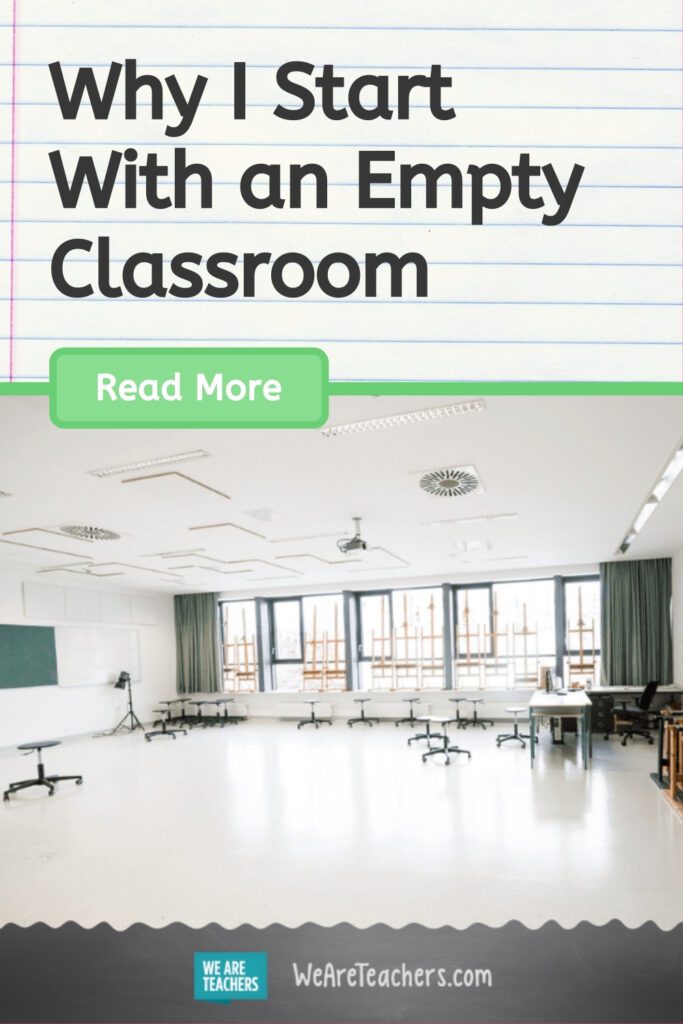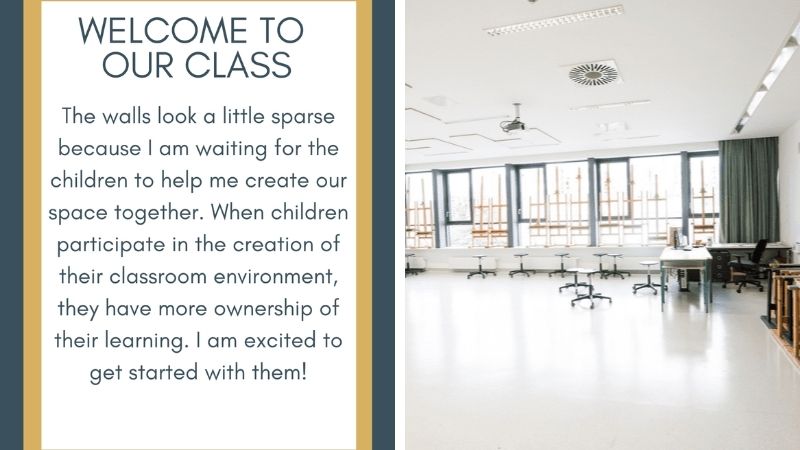When students and families enter our space at the start of the year, they find a rather empty classroom. There is furniture, places for children to sit, an easel to work at, and not a whole lot else. In particular, the walls are empty. My bulletin boards are bare. I put up a simple border, but no paper or fabric. It’s plain and clean.
There are simple signs up I’ve printed that let families know why the room looks this way: I am waiting for the children to help me create our classroom environment. It is our classroom, not mine and I want their input as we work together on the space.
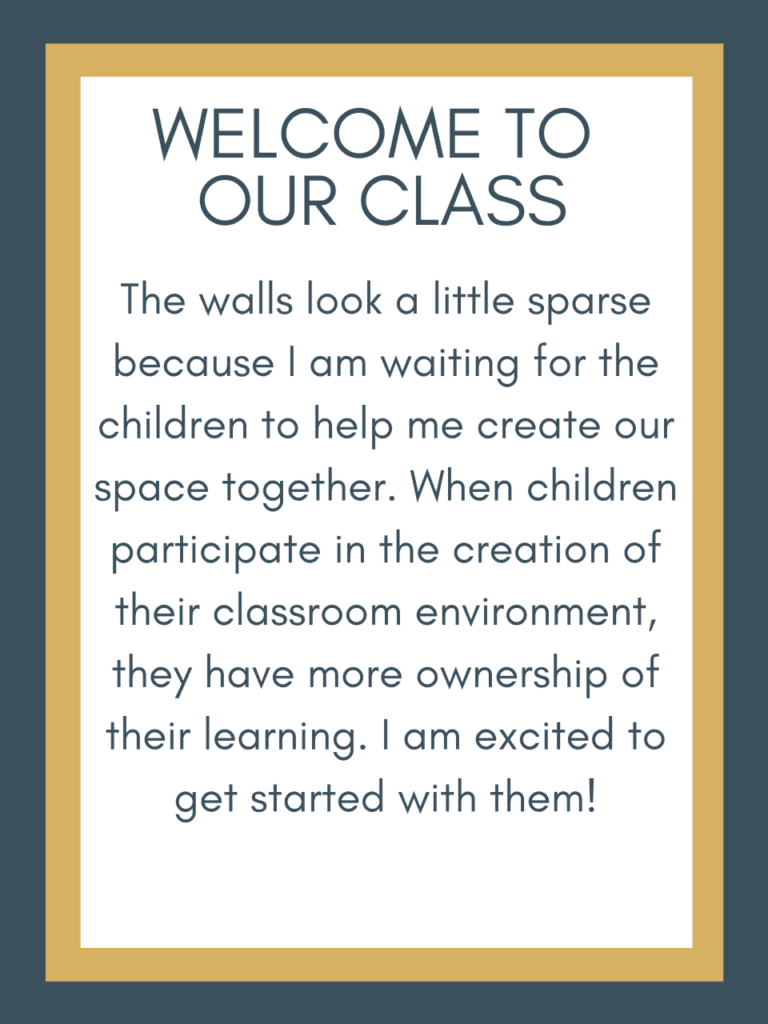
Many teachers love decorating their spaces before students arrive. If it brings you joy and makes you feel good, then by all means do it! Just know you’re doing it mostly for you, and that’s OK!
Starting the school year with empty walls has been a journey for me
When I began teaching, I spent (way too much of) my own money and time before school began crafting a beautiful classroom. I thought having a gorgeous room would make me a better teacher. I thought my students and families would see all the effort I’d put in and equate that with my teaching abilities and the year they’d be experiencing with me as their teacher.
Now I realize much of this pressure came from myself. This was before social media was a place where Pinterest and Instagram gorgeous classrooms were the norm. I was looking around at my colleagues and placing this pressure on myself. As the school year began, I was so anxious. There was so much out of my control and one aspect I could command was the classroom decor. But did it truly make a difference?
Here are some reasons why I now appreciate starting with a mostly empty classroom
● Sends the message the space is ours and not mine: When children walk into the classroom and hear, “I’ve been waiting for you! Let’s create our space together!” it sends a clear message about ownership of the space. That message transfers to ownership of the learning.
● Allows children to have a voice in their learning environment: Why not ask kids what they’d like their classroom to look and feel like? With younger students, these choices can be limited, “Do you think we should create our schedule with a black or blue marker?”
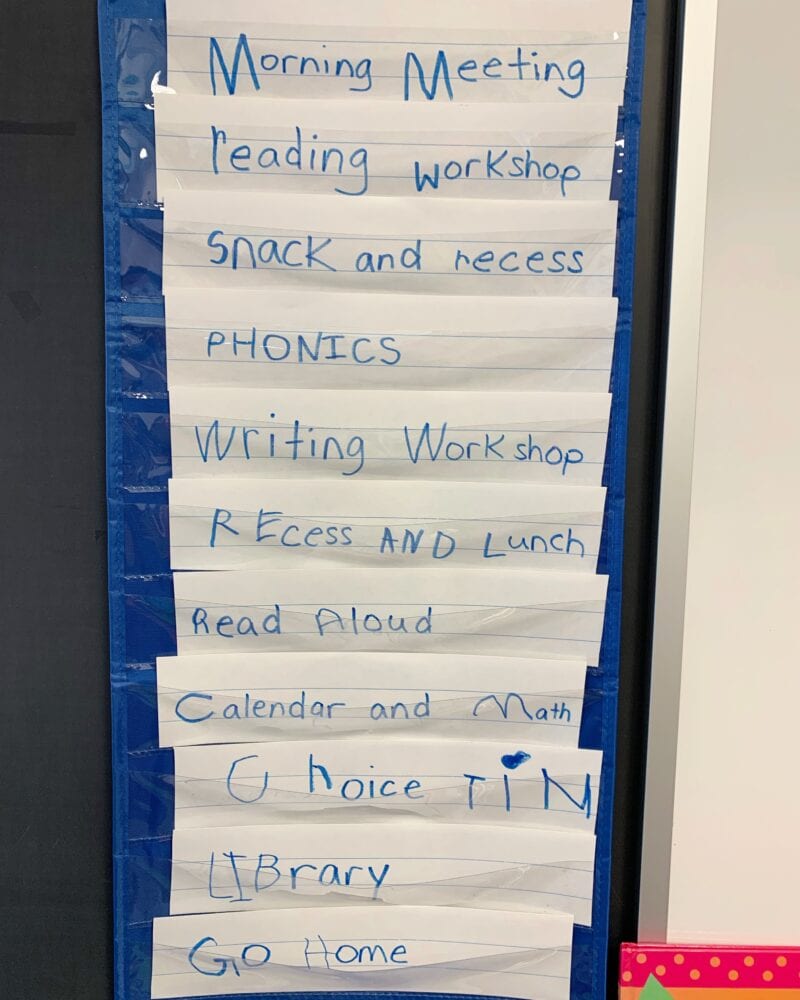
We created this schedule together. Each day we added a few items and after a week it was complete. I did much of the writing.
● Discourages clutter and visual noise that often distracts students: All those cute decorations can be visually stimulating and even distracting. Before you add anything to the space, think about purpose. Is it necessary? Does it need to be that color? That font?
● Takes stress off you: Teachers spend so much of their own money and unpaid time creating the ideal classroom for students. What if you could reclaim that time and money? Waiting for the students takes this huge job off your plate.
How to work with your students to set up a classroom space together
● Make a list of items to create with students: Once you have your list, prioritize each item. Remember, this is going to take weeks, not days, so think about what can wait and what you’ll need sooner rather than later.
● Plan time each day to work on items from your list: Depending on the age of your students, you won’t have their attention for more than ten minutes or so, plan accordingly. Some items will be made in a day, but others will take days or even weeks to finish.
● Set the expectations for interactive writing: explain how to use materials, what your expectations for students are when they aren’t writing with you (have them use a finger to write on the floor, their hand, in the air, etc. or give them paper/whiteboards to write with you).
● Remember, interactive means you work too: Depending on the age of your students, you’re going to be doing more of the writing, especially at the beginning of the school year when you start. We want children to be a part of the creation process, but teachers are a part of it too!
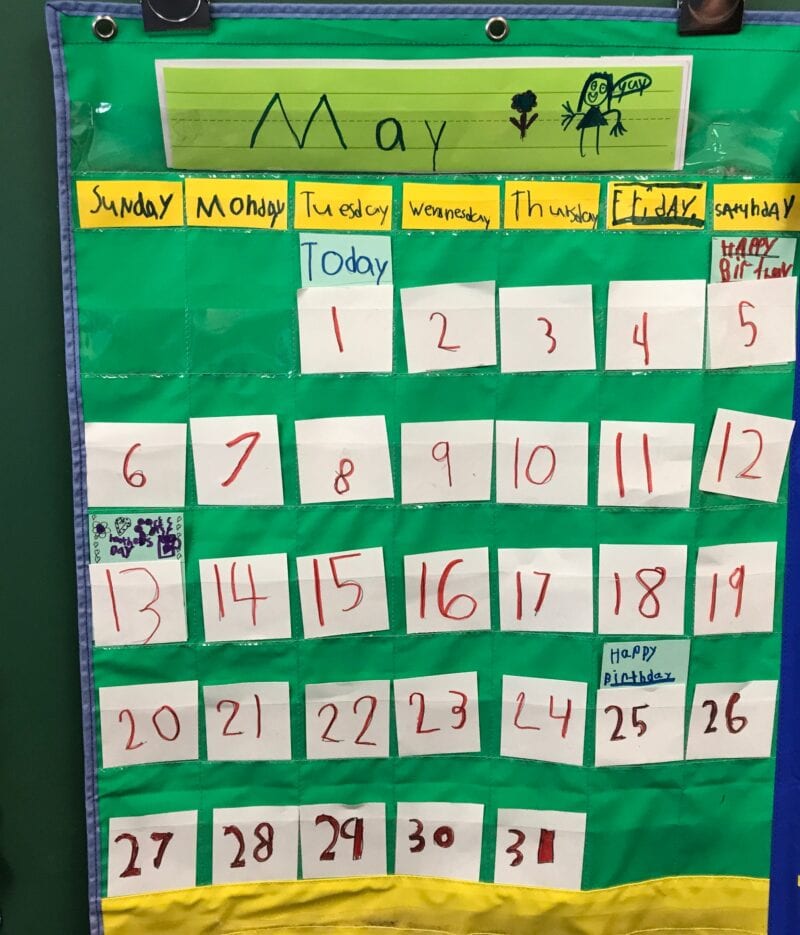
Each month, we create a new header and then get to practice writing numbers as we add to our calendar.
● Enjoy the process and celebrate the work: Over the first few weeks of school, your empty classroom will begin to fill with student-created work. You will notice students engaging with parts of the classroom in new, more meaningful, deeper ways.
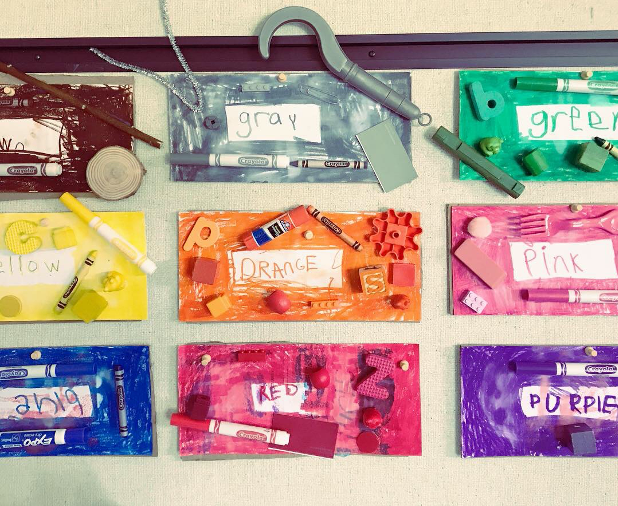
Over the course of a few days, students worked to find objects in the room, write, and create a display of color words.
What I’ve grown to understand is what kids need most is you. We know kids remember how you make them feel. Allowing students to help create their classroom sets a foundation for the relationships we want to build over the year.
Are you team decorate-your-classroom or team keep-it-simple? Share in the comments!
Plus, for more articles like this, be sure to subscribe to our newsletters.
